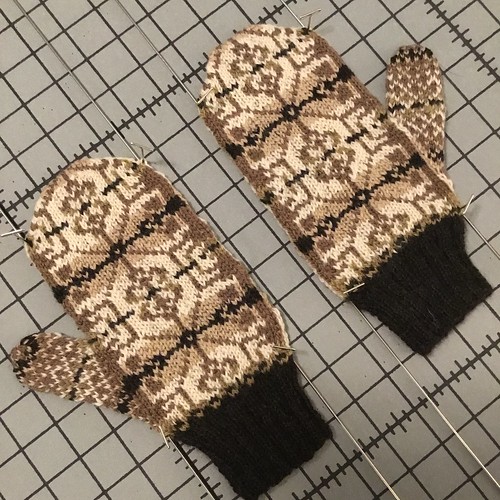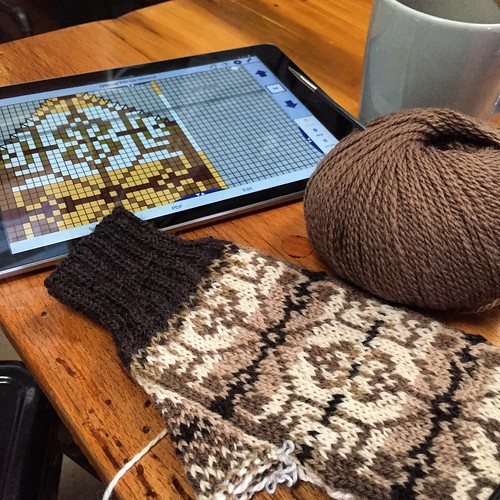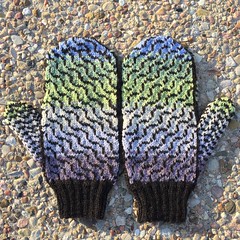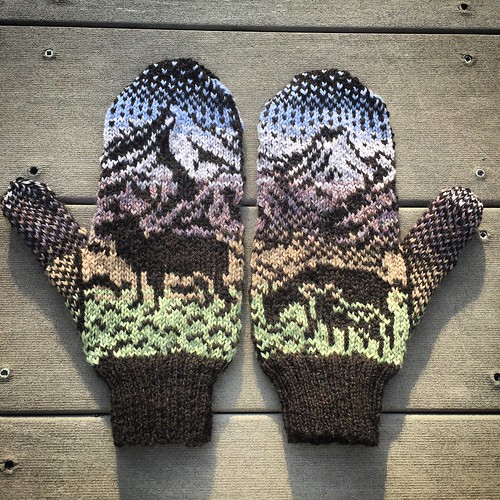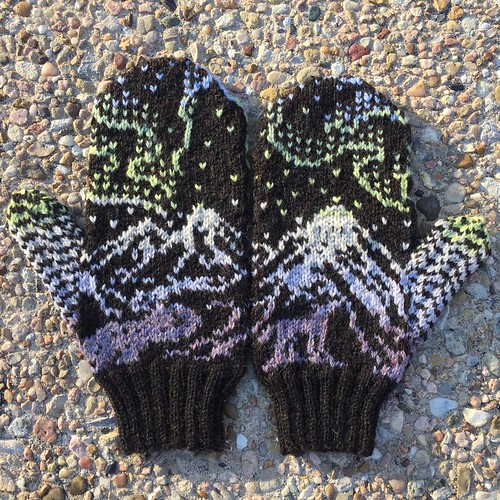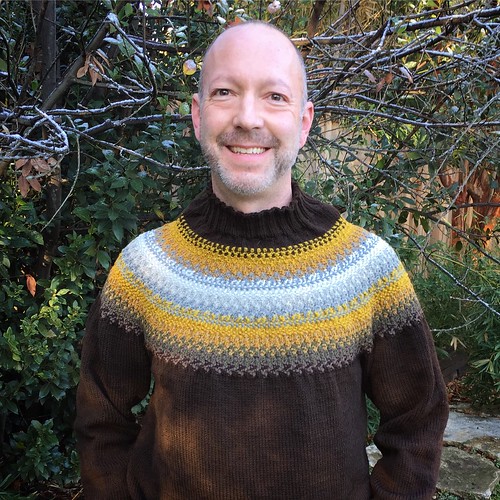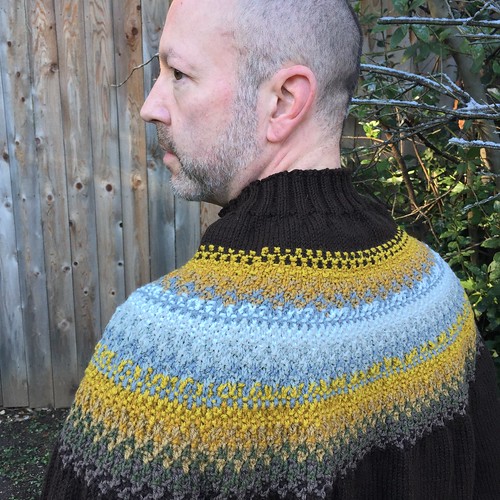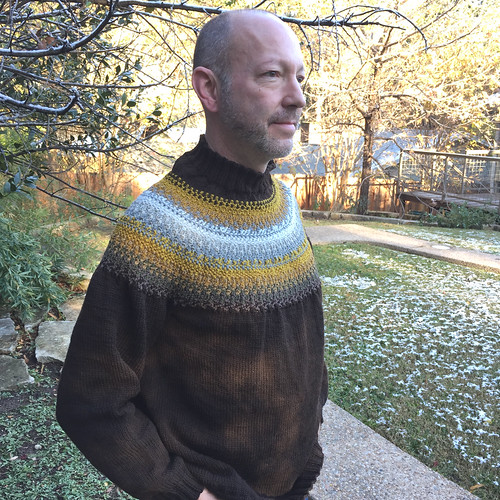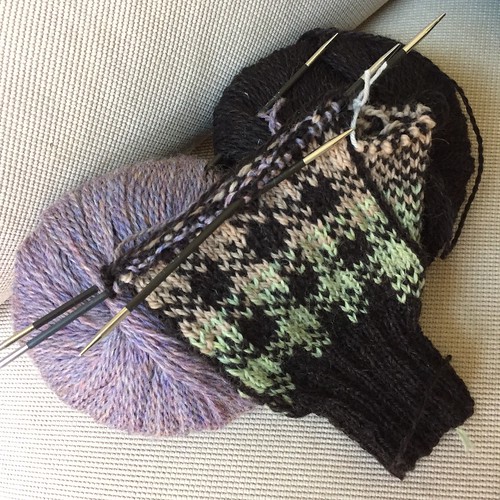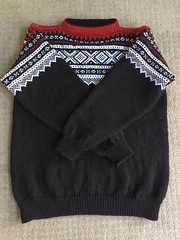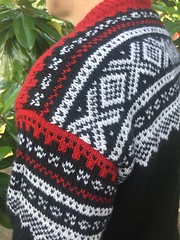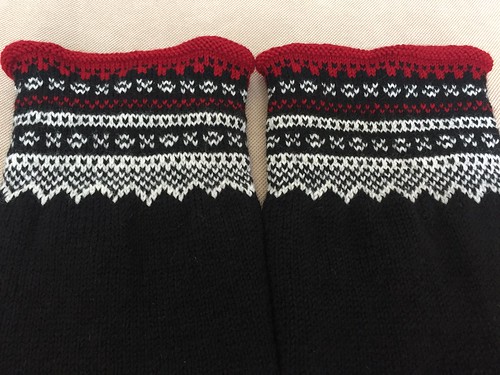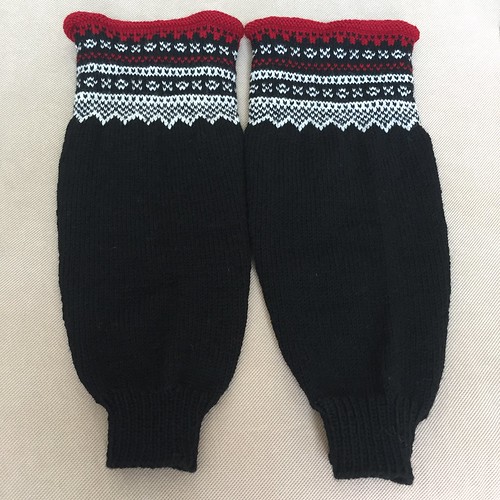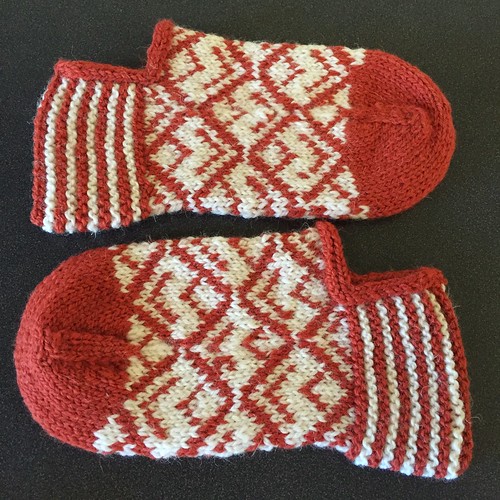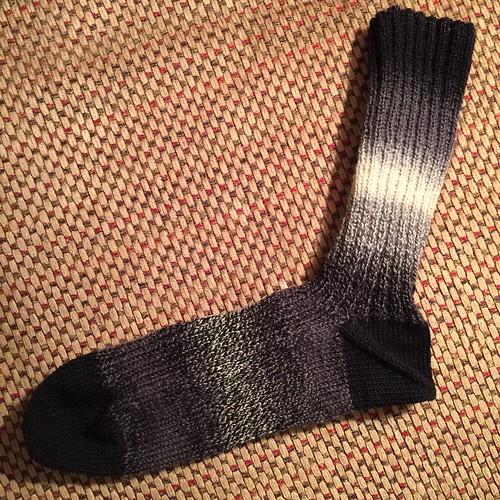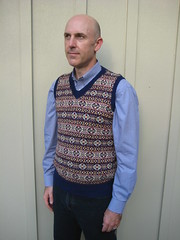After finishing the pairs of mittens for my sister and sister-in-law, I started looking at all the yarn I had leftover from the kit and thought I really should do something with all of it. The colors I had the most of were all the shades of brown. Perfect! At first I thought I'd make a hat, but wasn't sure I had enough. I knew one thing I had enough yarn for, though -- more mittens.
I searched Ravelry for Fair Isle mitten patterns that used five colors, but didn't really see anything that spoke to me. So I started flipping through my copy of Ann Feitelson's The Art of Fair Isle Knitting for some ideas. There were some mittens featured as a pattern, but they were a bit subdued for the yarn I had on hand. Then, on page 50, I ran across just the thing.
 |
| From Feitelson's The Art of Fair Isle Knitting |
With much squinting at the photo and a bit of guessing, I was able to chart out the pattern by using an Excel grid with different background colors. It was very slow going, but it really helped me figure out the symmetry. While making it, I kept thinking that the person who originally made these likely just had a few common motifs in her head and designed it as she went. I made a chart for the left hand, and then for the right. The original mittens have the thumbs arising from the palm, but I didn't have any idea how to do that having never done it myself, so using the patterns from the kit I'd just used, I charted out a thumb jutting from the side and keeping the pattern from the palm all the way around. Afterwards, I charted out the top of the thumb that is added at the very last after the body is complete. Once I had it done in Excel, I downloaded a PDF copy, and then pulled it into my KnitCompanion app so I could keep track of where I was as I went.
I'm surprised at how smoothly this all went. Luckily, the number of stitches in the mittens in the book matched up with the number in the kit patterns, so I could refer to that when I got in the weeds. I'd originally planned to make a 62-round pattern, but since the last round involved a color change right at the end, I left that last round out and used Kitchener stitch to close the finger tips across the last 20 stitches.
The thumbs were super fiddly and involved multiple yarn color changes across just 19 rounds of knitting. I use the same method used to catch floats in fair isle knitting to introduce new colors and weave out old ones. This adds a bit of time to the knitting, but is so worth it (to me) at the end when I can just turn the whole thing inside out and snip off all the dangly bits without having to worry about them coming undone. This was really hard to do inside the the thumb which was basically a 24-stitch tube. But still worth it.
I'm pleased with the results! I do wish that I'd been left with some more heathered colors to use. I think the overall effect is a bit more graphic than the original. The only heathered color is a goldish one (called Camel Heather) that you can see as the first color past the wrist ribbing. All the rest were solid colors. And they didn't always play nicely. I got several inches into my first mitten when I realized two colors weren't contrasting enough and went back to the drawing board, or rather, the spreadsheet. Jeff likes the tan background color (Almond), but that's the one that bugs me the most. The heathered grayish-blue in the original is so much more, I don't know, subtle and fluid. Still, I think the whole things works. These are too small for my hands, so I'll hold on to them and find someone with daintier hands to give them to.
I also made some socks at some point since the beginning of the year. The yarn was a Secret Santa gift from my friend Abbe and boy, does she know the kinds of things I like. It's Crazy Zauberball yarn in a colorway called Herbstwind (Autumn Wind). I love all the greenish blues and dark reds. Like other Zauberball yarns, these are kind of hard to predict where they'll go with their striping so I chose to use a solid yarn for the toes and a matching afterthought heel to pull it all together. The rest is just 2x2 ribbing across 72 stitches, with solid stockinette across the soles. I'm really happy with them. I finished them about a month ago, and am just now realizing I haven't worn them. That window may have closed, though. I'm afraid our cold weather is mostly gone for the year. They'll be there for me next year, though.
Not entirely sure what's up next. I just got a book from the public library, the Japanese Knitting Stitch Bible by Hitomi Shida. It's absolutely gorgeous and I'm entranced by all the intricate patterns. I'm sure some of these could be used to make some socks, a cowl, a scarf, a hat...
